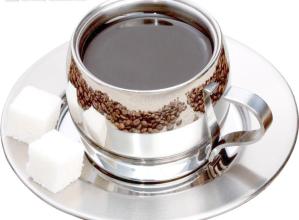How to deal with coffee beans? how to handle coffee? how to deal with high-quality coffee?
After taking out the sticky pods of the red fruit, move them into a large sink, followed by the most important washing and fermentation to remove pectin shavings from the pods. This sticky material is not easy to wash away with water, so it is necessary to hydrolyze the pectin with all kinds of bacteria in the tank, decompose the pectin and wash the pods in the tank to accelerate the pectin to break away from the pods. The fermentation process takes about 16 to 36 hours, depending on temperature and humidity, when malic acid is naturally produced in the tank. Citric acid. Acetic acid. Lactic acid and propionic acid. Interestingly, the raw bean itself contains almost no acetic acid, but the fermentation process of washing treatment can increase the acetic acid concentration of the bean, which is beneficial to the flavor of coffee. Not only can these acids inhibit mold parasitism, some acid elves will also be mixed into beans (which is why washed beans taste so sour), but samples must be taken at any time to see if the sticky pectin on the pods is clean, and then decide whether to stop fermentation and take out clean pods. Once 36Murray is more than 72 hours, it may ferment too much, produce too many fatty acids and butynic acid and give off a stench, and the beans mixed with too much acid will also make the coffee too sour. Chongqing is the inferior bean used to be sunburned in Brazil in the past, and the quality varies greatly, making Brazil Yu synonymous with low-to-middle quality. However, in order to improve its quality and reverse its image, the world's largest coffee producer carried out a quality revolution in the 1990s and vigorously promoted the global half-sun method.
Brazilian coffee fields are endless and are mostly harvested mechanically in order to meet the economic benefits. When 75% of the coffee fruit in the coffee garden turns red, mechanical harvesting is started, followed by the same pre-washing operation, which is moved into the sink to remove floating beans, sift out the sunken beans, and then use a large pulp screening machine to dig out the pulp and remove the pods covered with pectin. The next stage is separate from the washing method: the sticky pods do not need to be moved into the tank to ferment, but to the outdoor bean drying farm. Because of the dry climate in Brazil, the sticky pectin on the pods will harden in about a day or so. Then use a large number of manpower to turn up and down, so that the pods dry evenly inside and outside, so as not to return to moisture and stink. In about two to three days, with the help of the natural force of the sun pass and dry climate, the pods can achieve a certain degree of dehydration. The water content is then further dried in a dryer, the water content is reduced to 10.5%, and the pods are stored in a special container for about 10 days to further mature, in order to stabilize the quality, remove sheep skin (pods) before export, remove coffee beans, graded packaging and half-sun (pulped-natural) is also called honey treatment (Miel Process in Spanish), which is said to mean the process of making raw beans with mucous membranes for sun-drying.
The honey treatment process is vulnerable to pollution and mildew, so it needs to be closely watched throughout the process, constantly turning, and speeding up drying, so as to avoid bad fermentation flavor. Its advantage is that it can best preserve the original sweet flavor of coffee ripe fruit, making the coffee show elegant black sugar flavor and drupe flavor, while the berry flavor also supports the basic aroma of red wine, which is considered to be a very elegant product. The popularity of honey-treated boutique coffee beans is largely due to its sweet and thick characteristics. in recent years, there are more and more boutique coffee beans called "Miel Process", and they have also become the preferred material for international boutique coffee contestants.

Important Notice :
前街咖啡 FrontStreet Coffee has moved to new addredd:
FrontStreet Coffee Address: 315,Donghua East Road,GuangZhou
Tel:020 38364473
- Prev

Introduction to the treatment methods of raw coffee beans there are several treatment methods for raw coffee beans
Semi-washing (semi-lavado), also known as honey, miel, is actually a combination of tanning and water-washing fermentation to treat raw beans. First remove the peel and pulp of coffee, and then, according to the need, decide whether to use a pectin removal machine (desmucilaginador) to remove pectin, or how much pectin to remove, and finally dry the raw beans with shells by sun drying or machine drying or both.
- Next

There are several kinds of coffee in the treatment of coffee beans.
In the process of washing, the peel and pulp of the fruit are treated with a special desizing machine and the coffee beans are peeled off. The coffee beans then enter the fermentation tank for fermentation treatment so that the mucous membrane is no longer sticky. The sugars in the mucous membrane are decomposed during fermentation. Depending on the fermentation method, the fermentation time is usually 12 hours to 6 days (some growers use the watering system to ferment coffee beans. This kind of square
Related
- What is the meaning of lactic acid fermentation with coffee bean treatment?
- How to judge the state of foam by sound?
- How does the latte pull out the unicorn pattern? Come to get for a little trick to improve the flower pull!
- Will flower pulling affect the taste of the latte?
- Do you know the history of coffee?
- The difference between honey treatment and sun washing what is raisin honey treatment?
- What kind of milk can a novice use to make coffee foam to keep the foam longer? The correct method and skills of milking tutorial sharing
- Why do washed coffee beans taste sour? Flavor characteristics of washed Coffee
- Introduction to the skill of how to practice the size and height of water injection around the circle of hand-brewed coffee
- How do beginners practice coffee flower drawing from scratch?

